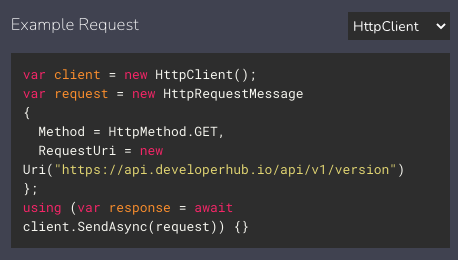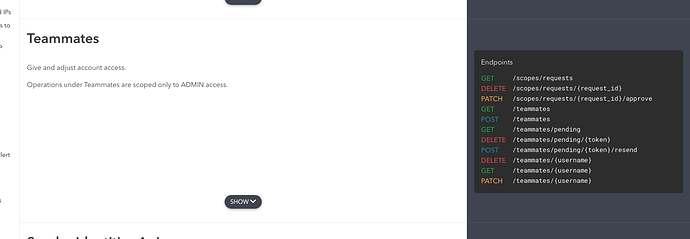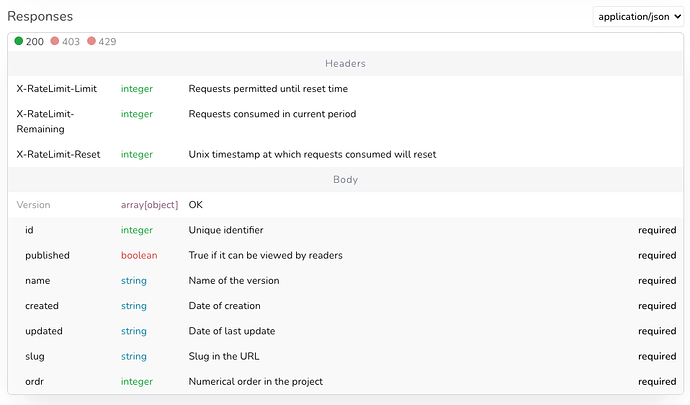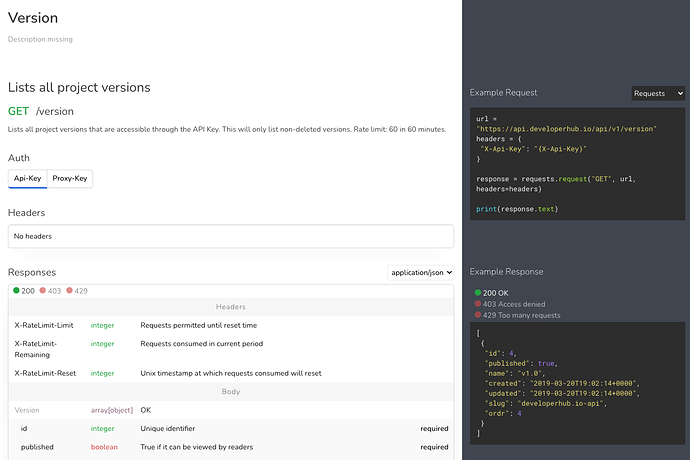Thanks for pointing these out. They are both fixed. Let me know if there’s anything else.
Would also like the ability to view the valid enum values for a property.
Would also like the ability to view the valid enum values for a property.
Enum values now show in the description!
Make the request/response code section stick to the top as long as the request/response in text section is in view
This one is done!
For big API References, you can now make the tags expandable so it loads much faster. Virtually, any API Reference can be loaded now.
Also, this adds an endpoints list for each tag, for expandable API References.
By default, any API Reference over 300kb will be expandable.
Also, tags in the index are now clickable.
@zed another thought - the Swagger editor provided on https://editor.swagger.io provides visibility into the pre-defined Schemas used throughout the API definition.
These Schema definitions provide a lot of contextual examples and definitions that may not fit on an endpoint (for example, describing the individual values of an enumerator, or if an array object expects to be populated with values from an enumerator).
Could a section be added beneath the existing generated API reference that contains a linked reference to the API Schema and its definitions?
Hey @Gabe_Kahen . You are actually the first one to request this. Usually customers use DeveloperHub’s API Reference because they are straight forward and show the user exactly what’s the request and response. However, I do understand that this might not be best for bigger specs where some objects/schemas are reused heavily, and it’s best to understand the schema rather than the request/response schema as a whole. I’ll get this tasked, but this will be a medium-term task as it requires quite huge changes to how we move data around and show schemas.
Golang → net/http
PHP → Guzzle/CURL
C# → HttpClient
Java → Apache HTTPClient
Ruby → net/http
C# HttpClient is now available

Java → Apache HTTPClient
Do you feel that OkHttp is more relevant nowadays than Apache HTTPClient?
I’m not a Java developer but a quick research suggests that OkHttp is the better choice nowdays 
We now show authentication headers/queries for APIKey type in the example request 
@Adam_Garrod I believe you required this
Hey @zed, nice work. We use HTTP basic authentication, would it be possible to show that in the examples? Thanks!
Yup of course, it is done now. Both HTTP Basic and Bearer are now supported. @Ran_Aroussi I believe you use bearer.
We also support description for requestBody now.
OkHttp (Java) is now available!




